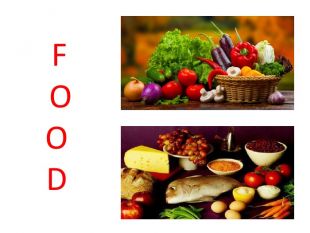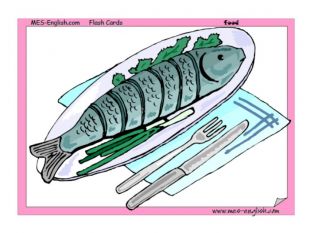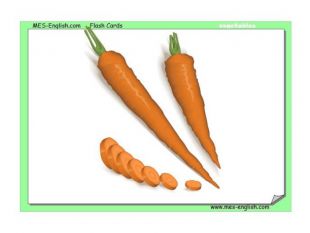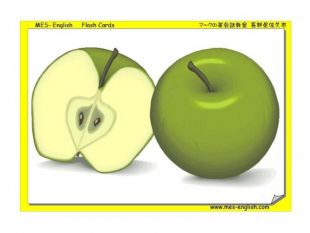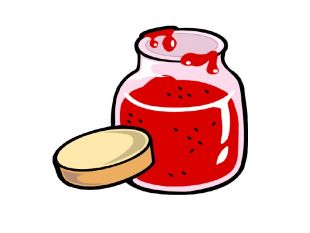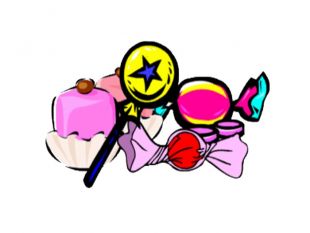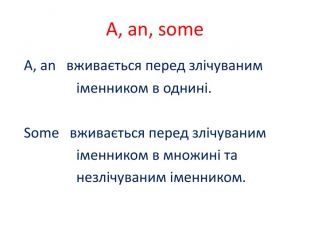Конспект уроку "Їжа. Злічувані та незлічувані іменники"
- конспект.docx docx
- презентація.pptx pptx
Конспект уроку в 5 класі на тему:
« Їжа. Злічувані та незлічувані іменники»
Підготувала
вчитель англійської мови
Мороз Вікторія Миколаївна
Тема: Їжа. Злічувані та незлічувані іменники
Мета:
- Навчальна: практикувати учнів у вживанні ЛО за темою уроку в усному мовленні у вивчених граматичних структурах; формувати навички читання, формувати навички монологічного та діалогічного мовлення на рівні мікровисловлювання.
- Розвивальна: розвивати комунікативні навички, мовну здогадку, пам'ять, увагу; розвивати вміння працювати самостійно, у парі, у групі, розвивати пізнавальний інтерес до англійської мови.
- Виховна: виховувати культуру спілкування, зацікавленість у розширенні своїх знань, виховувати любов до вивчення іноземної мови.
Обладнання: комп’ютер, комп’ютерна презентація, картки для індивідуальної роботи, flash cards, набір для роботи над презентацією.
Хід уроку
І INTRODUCTION.
ПІДГОТОВКА ДО СПРИЙНЯТТЯ ІНШОМОВНОГО МОВЛЕННЯ.
- Greeting
1) The song “Hello! How are you?”
Today we have got guests at our lesson. Let’s greet them and each other with the song “Hello! How are you?” (слайд 1)
HELLO! HOW ARE YOU?
Hello, hello!
How are you?
Hello, hello!
How are you?
Hello, hello!
How are you?
I’m fine, thank you.
2) Greeting poems
Red, yellow, green and blue
Hello . . . , how are you?
The weather is good
What about your mood?
- Warming up
Let’s play the game. I read the riddle. You have to guess it and to write the first letter of the word into the table.
- This small animal is green and lives in a pond. (слайди 2,3)
(a frog)
2. This fruit is orange and sweet. (слайди 4,5)
(an orange)
3. It is the second autumn month. (слайди 6,7)
( November )
4. This is a pet. It lives in the dog-house. (слайди 8,9)
(a dog)
II THE MAIN PART OF THE LESSON.
ОСНОВНА ЧАСТИНА УРОКУ
- Aim
So we have the word “food”. (слайд 10) It’s the theme of our today’s lesson. Today we’re going to speak about different kinds of food. We’ll revise countable and uncountable nouns, using a, an and some.
- Vocabulary
1) Vocabulary revision
Let’s revise the names of some kinds of food. Look at the blackboard and name the kind of food. (слайди 11- 45)
- What is it?
- It’s . . . .
2) Presenting New Vocabulary
Today we shall learn some new words. Look at the blackboard and repet after me.
Yoghurt ['jᴐ:ɡət] йогурт
Pasta ['pæstə] макаронний виріб
Pudding [pudıŋ] пудинг
A piece [pi:s] шматок
Biscuits ['bıskıt] сухе печиво, крекер
Crisps [krısps] хрумка картопля, чіпси
Meat balls ['mi:tbɔ:lz] фрикадельки
- Read the words by yourselves.
- Read the translation.
- Name the picture.
3) Vocabulary Drilling (слайд 46)
“Snowball Game”
Let’s play a “Snowball Game”. I’ll start a sentence and say what I want to buy in the shop. The first pupil repeats my words and adds one more thing he wants to buy. The next pupil repeats all that was said and adds one more thing and so on. Do it in chain.
- I want to buy some rice.
- Grammar
1) Presenting Grammar (cлайди 47)
Countable and uncountable nouns
Якщо ти не можеш полічити речі, які позначають іменники, то ці іменники – злічувані (countable): one apple, two apples, three apples (є форма множини)
Якщо ти не можеш полічити ці речі поштучно – то це незлічувані іменники (uncountable): cheese, meat, soup (немає форми множини).
2) Grammar Drilling
The game “Clap and Stamp”
When you hear a countable noun you clap your hands. When you hear an uncountable noun you stamp your feet.
Potato, rice, tomato, pasta, soup, meat, cucumber, salad, bread, cheese, sandwich, yoghurt, biscuits, fish, sausage, tea, jam, juice, toast, coffee, meat balls, apple, orange, banana, chicken, milk.
3) Presenting Grammar (слайд 48)
A/an, some
Артикль а/ an вживається перед злічуваним іменником в однині.
Aртикль аn вживається перед іменником, який починається на голосну букву. Aртикль а вживається перед іменником, який починається на приголосну букву.
Some вживається перед злічуваним іменником в множині та незлічуваним іменником.
4) Grammar Drilling
Complete the blanks with a, an and some. (слайд 49)
(Pupils work with the card) (додаток 1)
- Physical activity
You’re a little tired. So, it’s time to have a rest. Let’s play “The Freezing Game”. (слайд 50)
- Reading
1) Pre-Reading Activities
- Do you drink tea for breakfast?
- Do you drink coffee for supper?
- What drink do you prefer: juice or milk?
- Do you eat pasta for breakfast?
- Do you have your breakfast at home?
- Do you eat soup for dinner?
- What meals do you know?
2) New Vocabulary
There are some unknown words in the exercise 3 on page 53. Before reading the text look at the blackboard and repeat after me. (слайд 51)
A bowl [bəʋl] миска
To put [pʋt] класти
A lunch box [‘lʌntʃ‚bɒks] коробка для ланчу
Mashed potato [mæʃtpə'teıtəʋ] картопляне пюре
To feel [fi:l] відчувати, почувати
Just [dȝʌst] тільки, щойно
Enough [ı’nʌf] достатньо
A snack [snæk] закуска
A sausage roll ['sɔsıdȝrəʋl] сосиска в тісті
A canteen [kæn’ti:n] столова
Proper ['prᴐpə] суттєвий
A dish [dıʃ] страва
A bite [baıt] перекус
To get [ɡet] діставатись
3) Chain Reading
Ex.3 p.53. Let’s read the first paragraph. Do it in chain. Read the second paragraph of the text by yourselves.
4) Post – Reading Activities (слайди 52-54)
I ask you some questions and your task is to choose the right picture.
- What does Ann usually have for breakfast?
- She usually has . . . for breakfast.
- What does Ann usually have for lunch?
- She usually has . . . for lunch.
- What does Ann usually have for dinner?
- She usually has . . . for dinner.
Find the sentence in the text which has the translation.
- Project Work
1) Preparing for the work
To summarize all you’ve learnt today we’ll make our own project. The first group makes ‘the breakfast table”; the second group makes ‘the dinner plate” and the third group makes “the supper plate”.
2) Presenting projects
- Unscramble the sentence.
We usually have three meals a day: breakfast, dinner and supper.
- Presenting projects.
- Dialogue Speaking
Your next task is to make up the dialogues. (слайди 55-57)
- What do you usually have for breakfast?
- I usually have . . . for breakfast.
- What do you usually have for dinner?
- I usually have . . . for dinner.
- What do you usually have for supper?
- I usually have . . . for supper.
III CONCLUSIVE PART OF THE LESSON
ЗАКЛЮЧНА ЧАСТИНА УРОКУ
- Summing up
The game “Name four”.
Name four meals of the day. Name four things to eat. Name four things to drink. Name four fruit. Name four vegetables. Name four things vegetarians do not eat.
- Evaluation
You’ve done a lot today and you’ve done your best at the lesson. Thank you for your work.
Each of you have some candies. Count them and tell me the number. The pupil who has got the largest number of candies gets 12, others get . . . . The rest of the pupils get sweet marks.
- Farewell
It’s time to say “good-bye” . (слайд 58)
GOOD-BYE SONG
Now it’s time to say good-bye,
say good-bye, say good-bye.
Now it’s time to say good-bye,
Good-bye, everyone!
ДОДАТОК 1
Match the words with the pictures then complete the blanks with “a”, “an”, “some”.

ДОДАТОК 2
The list of food / products
|
Potato Rice Pasta Soup Meat Salad Bread Cheese Sandwich Yoghurt Biscuits Fish
|
Sausage Tea Jam Juice Toast Coffee Meat balls Apple Orange Banana Chicken Milk
|
.
ДОДАТОК 3
HELLO! HOW ARE YOU?
Hello, hello!
How are you?
Hello, hello!
How are you?
Hello, hello!
How are you?
I’m fine, thank you.
Hello, hello!
How are you?
Hello, hello!
How are you?
Hello, hello!
How are you?
I’m fine, thank you.
ДОДАТОК 4
GOOD-BYE SONG
Now it’s time to say good-bye,
say good-bye, say good-bye.
Now it’s time to say good-bye,
Good-bye, everyone!
Now it’s time to say good-bye,
say good-bye, say good-bye.
Now it’s time to say good-bye,
Good-bye, everyone!
Good-bye, everyone!


про публікацію авторської розробки
Додати розробку



















































![A bowl [bəʋl] миска. A cup [kʌp] чашка. A glass [ɡla:s] склянка. To put [pʋt] класти. A lunch box [`lʌntʃˏbɒks] коробка для ланчу. As a rule [əzə`ru:l] як правило. A plate [pleıt] тарілка. Mashed potato [mæʃtpə'teıtəʋ] картопляне пюре A bowl [bəʋl] миска. A cup [kʌp] чашка. A glass [ɡla:s] склянка. To put [pʋt] класти. A lunch box [`lʌntʃˏbɒks] коробка для ланчу. As a rule [əzə`ru:l] як правило. A plate [pleıt] тарілка. Mashed potato [mæʃtpə'teıtəʋ] картопляне пюре](/uploads/files/4901/286413/314154_images/51.jpg)
















